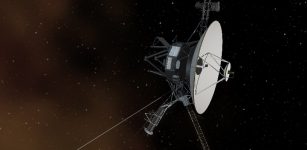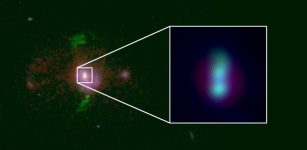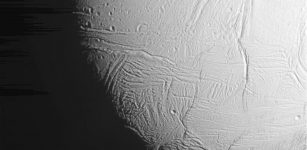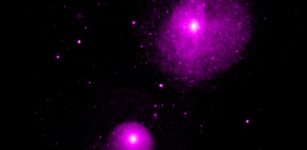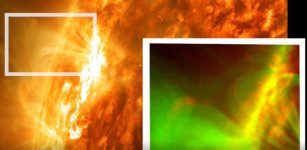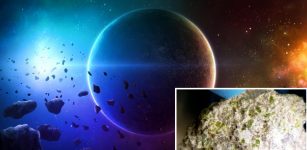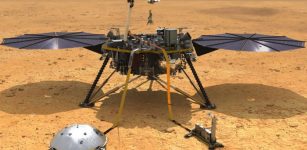Eddie Gonzales Jr. – MessageToEagle.com – NASA’s Juno mission has delivered its first science results on the amount of water in Jupiter’s atmosphere.
The Juno results estimate that at the equator, water makes up about 0.25% of the molecules in Jupiter’s atmosphere—almost three times that of the Sun.
 The JunoCam imager aboard NASA’s Juno spacecraft captured this image of Jupiter’s southern equatorial region on Sept. 1, 2017. The image is oriented so Jupiter’s poles (not visible) run left-to-right of the frame. Credit: NASA/JPL-Caltech/SwRI/MSSS/Kevin M. Gill
The JunoCam imager aboard NASA’s Juno spacecraft captured this image of Jupiter’s southern equatorial region on Sept. 1, 2017. The image is oriented so Jupiter’s poles (not visible) run left-to-right of the frame. Credit: NASA/JPL-Caltech/SwRI/MSSS/Kevin M. Gill
These are also the first findings on the gas giant’s abundance of water since the agency’s 1995 Galileo mission suggested Jupiter might be extremely dry compared to the Sun (the comparison is based not on liquid water but on the presence of its components, oxygen and hydrogen, present in the Sun).
For decades, planetary scientists have tried to make an accurate estimation of the total amount of water in Jupiter’s atmosphere.
Jupiter was likely the first planet to form, and it contains most of the gas and dust that wasn’t incorporated into the Sun.
“Just when we think we have things figured out, Jupiter reminds us how much we still have to learn,” Scott Bolton, Juno principal investigator at the Southwest Research Institute in San Antonio, said in a press release.
“Juno’s surprise discovery that the atmosphere was not well mixed even well below the cloud tops is a puzzle that we are still trying to figure out. No one would have guessed that water might be so variable across the planet.”
The Juno science team used data collected during Juno’s first eight science flybys of Jupiter to generate the findings. (Juno entered the orbit of Jupiter on July 4, 2016)
They initially concentrated on the equatorial region because the atmosphere there appears more well-mixed, even at depth, than in other regions. From its orbital perch, the radiometer was able to collect data from a far greater depth into Jupiter’s atmosphere than the Galileo probe—93 miles (150 kilometers), where the pressure reaches about 480 psi (33 bar).
“We found the water in the equator to be greater than what the Galileo probe measured,” said Cheng Li, a Juno scientist at the University of California, Berkeley. “Because the equatorial region is very unique at Jupiter, we need to compare these results with how much water is in other regions.”
Juno’s 53-day orbit is slowly moving northward, as intended, bringing more of Jupiter’s northern hemisphere into sharper focus with each flyby. Juno’s 24th science flyby of Jupiter occurred on Feb 17. The next science flyby takes place on April 10, 2020.
Written by Eddie Gonzales Jr. – MessageToEagle.com Staff
 The JunoCam imager aboard NASA’s Juno spacecraft captured this image of Jupiter’s southern equatorial region on Sept. 1, 2017. The image is oriented so Jupiter’s poles (not visible) run left-to-right of the frame. Credit: NASA/JPL-Caltech/SwRI/MSSS/Kevin M. Gill
The JunoCam imager aboard NASA’s Juno spacecraft captured this image of Jupiter’s southern equatorial region on Sept. 1, 2017. The image is oriented so Jupiter’s poles (not visible) run left-to-right of the frame. Credit: NASA/JPL-Caltech/SwRI/MSSS/Kevin M. Gill
